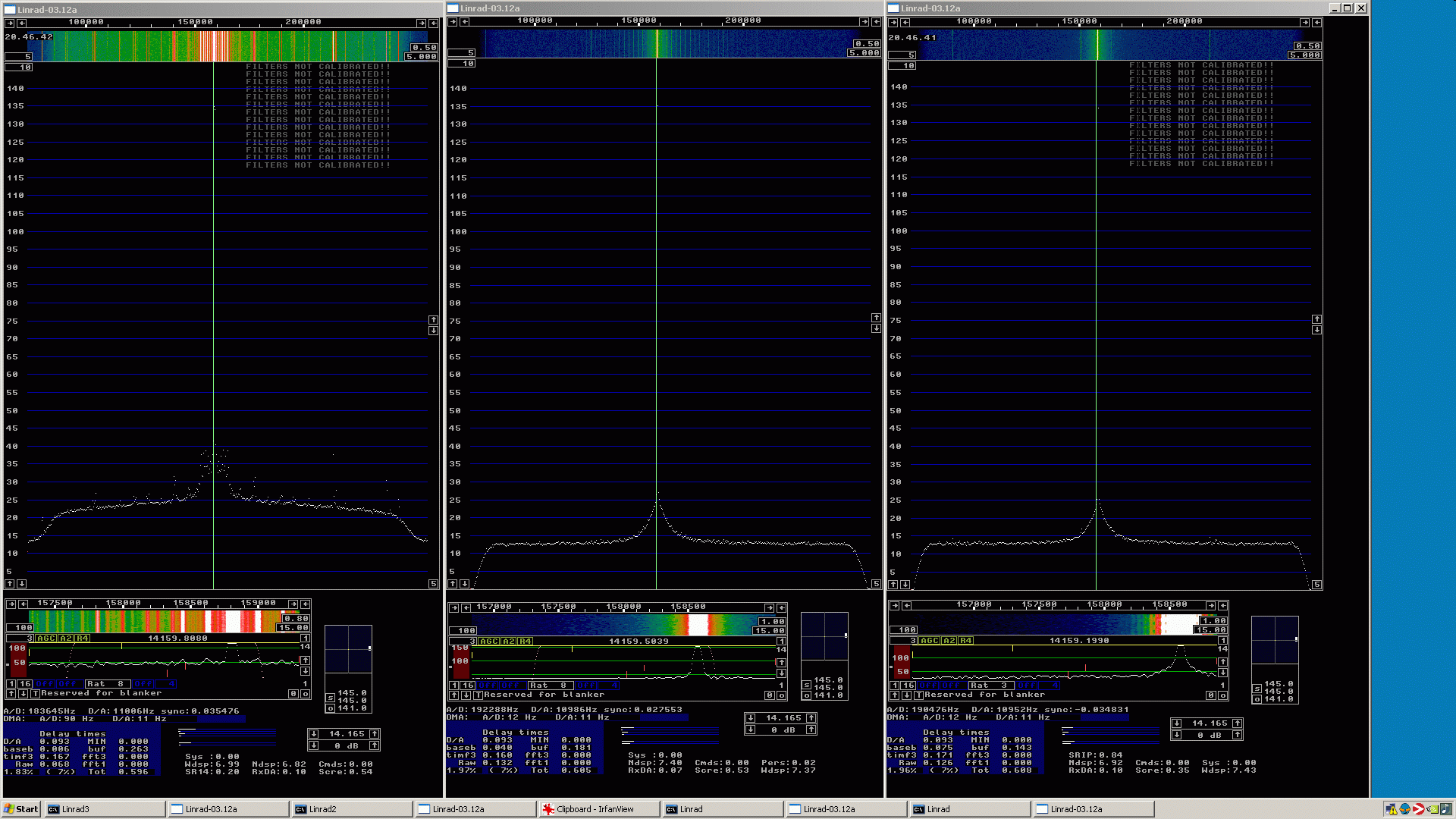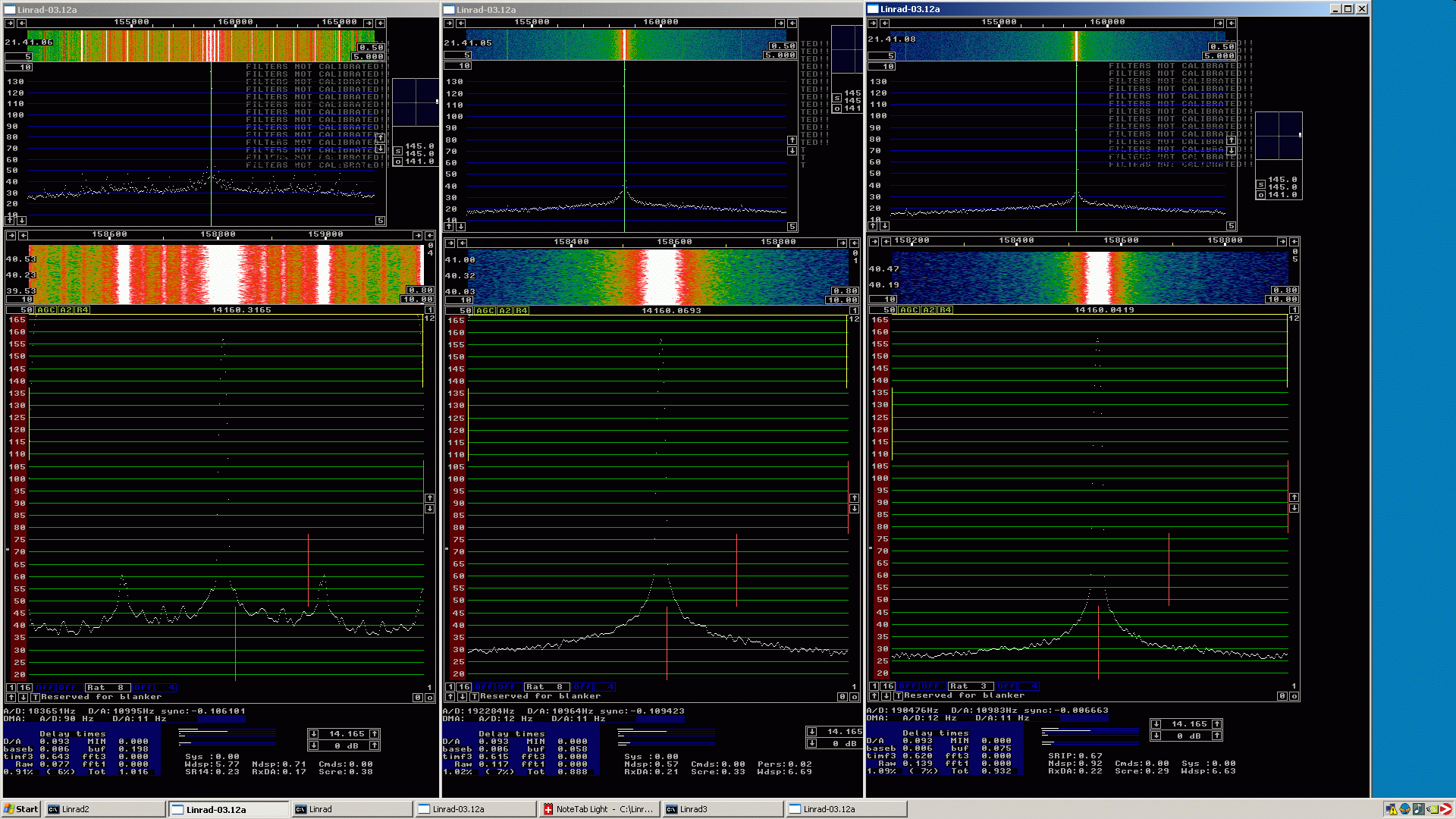
Frequency stability.Figure 1 shows SDR-14, Perseus and SDR-IP(option 01) receiving on 14.159 MHz. The signal is generated by a crystal oscillator with very low phase noise about -180 dBc/Hz at a frequency separation of 10 kHz.The signal was sent to a resistive splitter that was followed by attenuators that were used to set all the SDRs to within 1 dB of saturation. The Linrad parameter "First FFT amplitude" was set to make the S-meter reading identical. With identical parameters for the first FFT bandwidth and size that places the signal at the same level in the main spectrum, 135 dB. The colour scale for the waterfall is the same in all three instances of Linrad so the noise floor (reciprocal mixing from the sampling clock and and A/D converter noise) can be compared directly. |

|
|
Fig 1.
From left to right, SDR-14, Perseus and SDR-IP (with option 01)
The SDR-14 has much more noise and a lot of spurs compared to the other
two SDRs.
Perseus and SDR-IP do not differ significantly.
The noise floor is at similar levels while the spurs occur at different
frequencies.
Spurs that are 120 dB below the dominating signal are not of much interest
when the units are used as radio receivers because they would disappear under
the antenna noise.
Figure 2 shows a similar measurement at close range. Here one can see that the SDR-IP is about 5 dB better than the Perseus at a frequency separation of 70 Hz. Extremely low sideband noise at such a close range is of no practical use. It is a side effect of the low RMS value of the random frequency variations of the high quality oscillator. Keeping the random frequency fluctuations small may be useful since it will allow precise frequency (and phase) measurements. |

|
|
Fig 2.
From left to right, SDR-14, Perseus and SDR-IP (with option 01)
The SDR-14 has much more noise and a lot of spurs compared to the other
two SDRs.
At very close range where phase noise dominates, the SDR-IP is clearly
better than the Perseus.
To SM 5 BSZ Main Page |